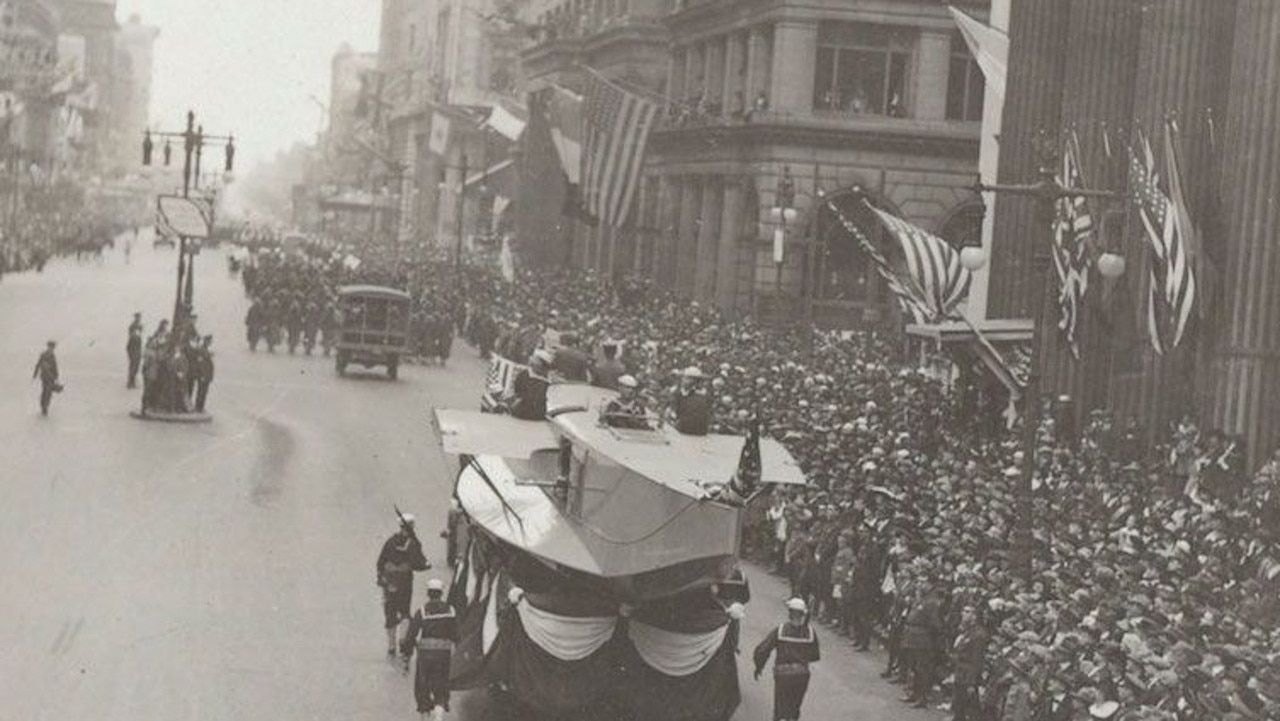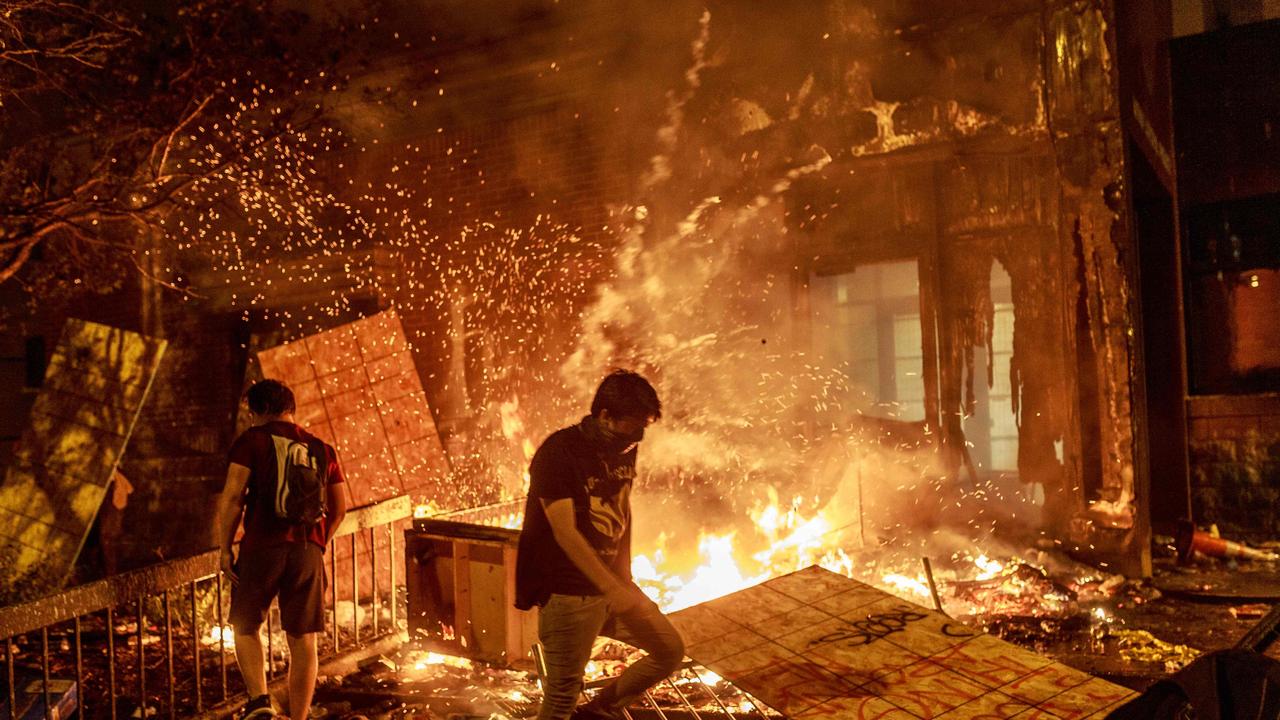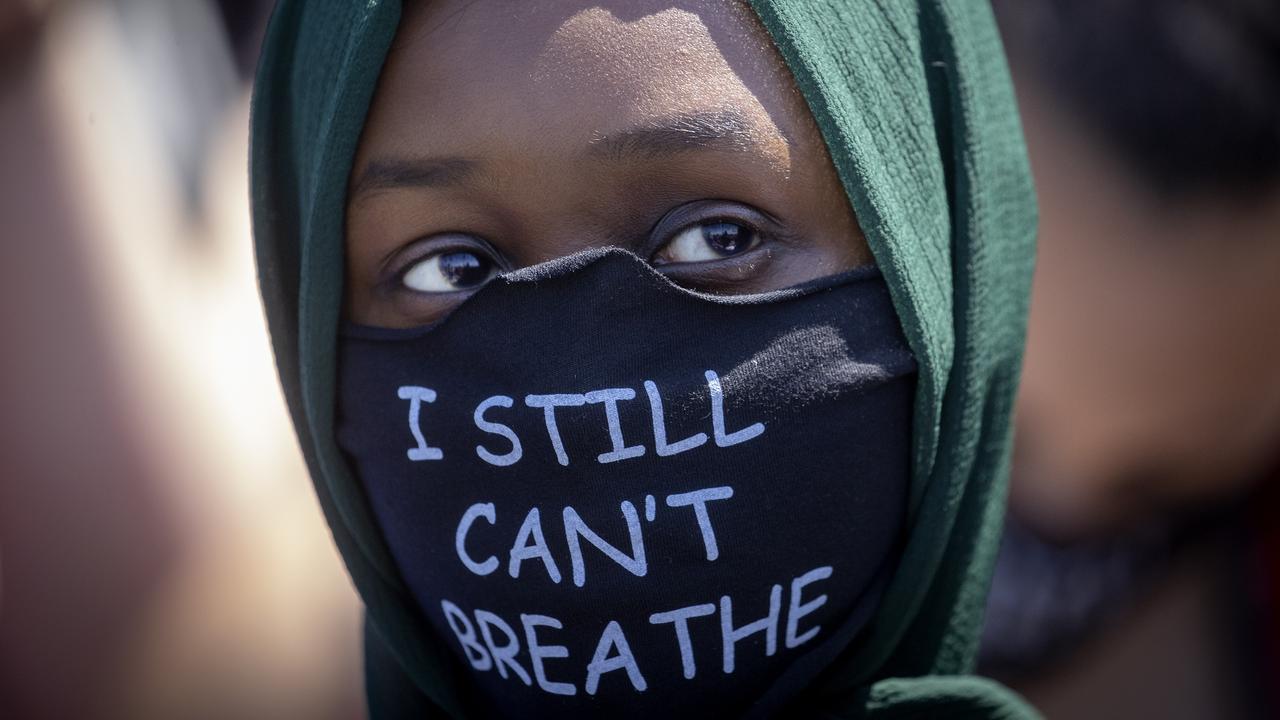Coronavirus: Fears US protests could be ‘super spreader’ events for COVID-19
US politicians are increasingly worried the protests could be “super spreader” events which will see scores infected with coronavirus.
For days protesters have been on the streets of US cities loudly telling the world about the death of Minneapolis resident George Floyd, who perished after a police officer pushed his knee into the man’s neck.
But a number of health experts and politicians have said they are increasingly worried the demonstrations could turn into “super spreader” events turbo boosting coronavirus infection rates.
Nowhere is this possibility more unsettling than in protest-hit Philadelphia. And that’s because of an event that happened 102 years ago.
In late September 1918, a huge parade was held through the streets of downtown Philadelphia.
Around 200,000 people crowded together to attend the Liberty Loans Parade, a fundraiser for the World War One war effort.
There was an interloper in the crowd however – Spanish flu. It had already swept through Europe, killing millions. The first infection reached Philadelphia nine days before the parade.
Despite the risk, and advice from some doctors, organisers decided to press ahead. Just 24 hours later more than 100 people had caught Spanish flu in the city.
RELATED: Follow the latest coronavirus updates

Within weeks, Philadelphia would record 47,000 infections with 16,000 people succumbing to the disease as infections fanned out from the parade. The outbreak was so bad, for a time thousands of bodies went unburied.
Yet in St Louis, where a similar parade was cancelled, deaths from Spanish flu didn’t even crack 7000.
More than 100,000 Americans have died of coronavirus so far. Some virus watchers have looked on with alarm at the protests which are happening before COVID-19 has been brought under control. Many cities, such as New York, still aren't fully out of lockdown let alone allowing mass gatherings.
But opinion differs on how likely the demonstrations are to be an incubator for the virus.

‘IF YOU PROTESTED, GET A TEST’
Medical historian Dr Howard Markel told the New York Times the current protests were uncomfortably similar to the Philadelphia parade of 1918.
“Public gatherings are public gatherings — it doesn’t matter what you’re protesting or cheering.
“That’s one reason we’re not having large baseball games and may not have college football this (autumn).”
Atlanta Mayor Keisha Lance Bottoms said she was concerned about the possibility of COVID-19 spreading.
“If you were out protesting last night, you probably need to go get a COVID test this week,” The Guardian reported her as saying on Saturday.
The same day in Los Angeles, the city reported 2112 new cases of coronavirus, the highest number of fresh infections in a single day.
Mayor Eric Garcetti said he was worried about the potentially lethal combination of protest and pandemic.
"We do need to make sure these protests do not become places that are super spreader events,” NBC Los Angeles reported him as saying.
"It is not a reason to not protest. We want to find peaceful ways for people to do that."
Some mayors have even suggested protesters self-isolate from their families when they return home.

WILL PROTESTS SPREAD COVID-19?
But whether or not the protest really will be a breeding ground for the virus depends on a number of factors – some that work in favour of COVID-19 spreading, and others that don’t.
One factor is the demographic of many of the protesters.
An April study from the Pew Research Centre, a think tank, found African-Americans were disproportionately affected by COVID-19.
In New York City, black people made up less than 10 per cent of the population but almost 20 per cent of cases. In the southern state of Louisiana, 70 per cent of those diagnosed with coronavirus were African-Americans. That’s despite African-Americans only making up a third of the population.
The chief reason is because black Americans are more likely to be poorer.
That means they may have jobs they simply can’t afford to not turn up to, even if they are sick or the work poses a risk of transmission. They may live in more densely packed neighbourhoods. And crucially, African-Americans may have less access to quality healthcare and could therefore be living with underlying health conditions making them vulnerable to the virus.
However, the young age of many of those on the streets could work in their favour given COVID-19 affects older people more severely.
Infectious diseases expert Dr William Schaffner from Tennessee’s Vanderbilt University said being in the open air also dialled down the coronavirus risk.
“The outdoor air dilutes the virus and reduces the infectious dose that might be out there, and if there are breezes blowing, that further dilutes the virus in the air,” he told the New York Times.

Which is all well and good, but the protesters aren’t going on a sedate stroll in the park.
Even the peaceful marches involve lots of shouting for justice, which can project any virus further.
When it comes to clashes, it’s even worse with lots of physical contact, running and exhaling – which produces lots of virus laden droplets.
Dr Schaffner’s view, however, is that rioters are generally quickly passing one another so the risk is still low.

It’s not a view shared by Dr Markel.
“Yes, the protests are outside, but they are all really close to each other, and in those cases, being outside doesn’t protect you nearly as much.”
The police’s use of tear gas and pepper spray, on some occasions, also doesn’t help as that induces the production of secretions which could make it easier for COVID-19 to spread.
The congregating of large groups of people from many different regions – at a CBD protest for instance – can also help the geographic spread of a virus that otherwise might be confined to one area.
Some mayors and health officials have urged protesters to wear masks, wash their hands and socially distance when they are on the streets. But being socially distant in the middle of chaotic scenes, when tempers are high, is easier in theory than in practice.
Atlanta’s Mayor Lance Bottoms has another concern, however. Dealing with the protests meant she wasn’t dealing with the pandemic.
“I realised that I hadn’t looked at our coronavirus numbers in two days,” she told CNN on Sunday.
“And that’s frightening, because it’s a pandemic, and people of colour are getting hit harder.”
The mayor of Atlanta will be hoping her city in 2020 won’t become an eerie echo of Philadelphia following the parade of 1918.




